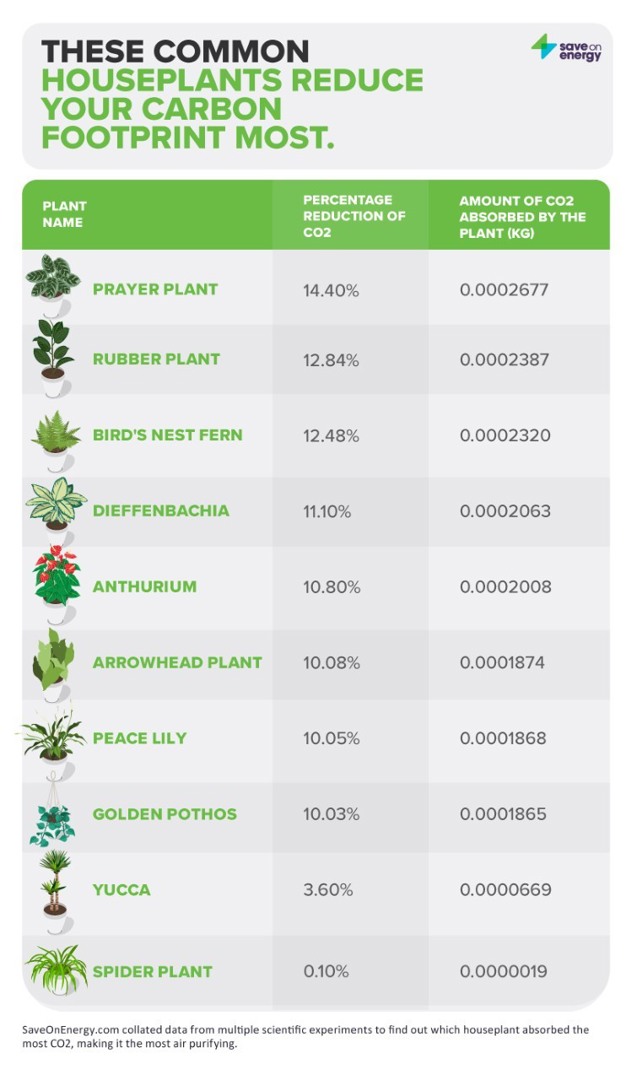It is International Houseplant Appreciation Day tomorrow (April 13th), and it looks to be bigger and better than ever this year following reports that some houseplant retailers have seen an increase in sales of 500% over the last year. This may be because houseplants have been known to boost mental health, but have you ever stopped to think about the positive impact on your home and wellbeing too?
As people spend approximately 90% of their time indoors, SaveOnEnergy.com/uk wanted to find out how effective certain houseplants are at taking in CO2 and cleaning our air, ranking them in order of most air-purifying to least.
Key findings:
- The most effective houseplant at removing CO2 from the air is the prayer plant
- 8 out of the 10 plants studied were able to remove over 10% of CO2 in 24 hours
- The plant least reducing your carbon footprint is the spider plant!

Click here for the enlarged image.
SaveOnEnergy’s study:
In a bid to discover which houseplant could reduce someone's carbon footprint and improve the air quality in the home the most, SaveOnEnergy.com/uk analysed two scientific studies* which measured houseplant CO2 intake in a controlled environment.
Replicating the environment of a home environment, SaveOnEnergy took data with light levels similar to those of bright, indirect sunlight, and a starting ppm (parts per million) of CO2 comparable to an indoor space with no ventilation.
Plants were observed over a 24-hour period, and an average was taken over this time. This is because some plants are known to produce oxygen during the day, but take some back in at night.
The results are as follows:
The most effective plant for absorbing CO2 and reducing your carbon footprint is a prayer plant, a member of the calathea family. The prayer plant took in 14.4% of the total CO2 in the chamber, roughly 0.0003kg.
The least air purifying houseplant considered is the spider plant. This common favourite among homeowners was able to absorb just 0.1% of the total CO2, meaning it took in just 0.000002 kg of CO2.
More data and information can be found on SaveOnEnergy’s blog post here: https://www.saveonenergy.com/uk/houseplants-offset-co2-emissions/
Methodology:
SaveOnEnergy.com/uk compiled data from two comparable studies to find out about the quantities of CO2 certain plants are able to absorb: ‘Effectiveness of Indoor Plants to Reduce CO2 in Indoor environments’, and ‘The Influence of House Plants on Indoor CO2’.
They used equivalent data from each experiment to standardise the data for 10 popular houseplants so it was reflective of a home environment: 25 degrees Celsius, approx. 700-1000 lux in a sealed chamber of 1 metre cubed with a starting ppm of 1000.
SaveOnEnergy found the volume of CO2 in each chamber combined with the percentage decrease in CO2 over a 24-hour period to attain the total reduction of CO2 for each plant in kilograms.
Source: https://www.saveonenergy.com/uk/
